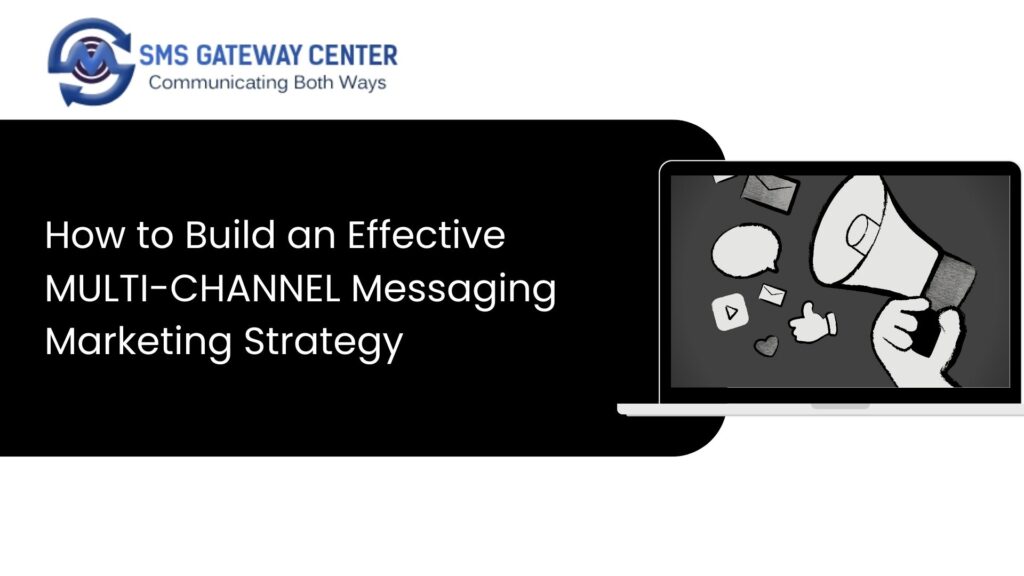How to Build an Effective MULTI-CHANNEL Messaging Marketing Strategy
As the world becomes more connected than ever before, brands have an opportunity to reach consumers wherever they are and whatever device they’re using. With the right strategy, messaging marketing can be a powerful tool both for building brand awareness and driving sales of your products or services. With the right approach, messaging marketing can also be an effective tool for successfully reaching your target audience across different channels. After all, not every message will appeal to everyone. You need to understand who you’re trying to reach and what type of response you should expect from them. If you want to build an effective MULTI-CHANNEL messaging marketing strategy that engages your target audience on a consistent basis, read on…

Define your target audience and understand their needs
Before you can build an effective MULTI-CHANNEL messaging marketing strategy, you need to understand who your target audience is, what they’re interested in, and what they need most. First, identify the people you want to reach. These might be consumers who are in your target market, other businesses in your industry, demographics that are likely to buy your products or services, or people who are likely to be interested in your brand. Next, figure out what types of messages these people would be most likely to respond to. Was it an informative SMS? An offer of a special deal on your products or services? A promotional SMS with an incentive?
Research your audience to know who you’re talking to
Once you know who you want to reach, you’ll need to do some research to find out who these people are. Start by looking at data about your current customers and prospects to get a sense of who your target audience is and what they like. Next, study the demographics, psychographics, and behavior of your potential customers to understand who they are and how they like to interact with brands. Also, look at what types of content your customers and prospects are sharing on social media, so you have a better idea of what types of messages they prefer.
Create personas for better messaging and ad targeting
Once you have a better sense of whom you want to reach and what type of messages they like, you can start thinking about how to engage them. One way to do this is to create personas for your audience. A persona is a fictional character that you use to represent your target audience. The persona should represent an average customer within your target market who has certain characteristics and behaviors. For example, a persona might be an accountant in his/her 30s who loves travel, loves to try new food, and spends about $4,000 per month on groceries. The personas you create can help you decide what type of messaging to create, test new messaging ideas, and decide on the best channel for your brand. You can create personas for your audience based on insights from demographics, psychographics, and social media data.
Measure the performance of your messaging strategy
Once you’ve created your personas, you’ll want to start thinking about ways to engage them with your brand. One way to do this is to create relevant and interesting content that is tailored to your target audience and your desired outcome. This content can come in the form of blog posts, videos, images, and more. You can also use messaging features such as live chat, 1-to-1 replies, and threaded comments to engage your audience. These features allow you to create one-on-one conversations with potential customers, providing them with a personal touch and providing you with useful feedback.
Take a look at the pros and cons of MULTI-CHANNEL Messaging Marketing Strategies
There are many benefits to building an effective MULTI-CHANNEL messaging marketing strategy. First and foremost, this is an effective way to reach a large audience on a variety of channels. Many brands now have a strong focus on building a strong presence across social media, web, and mobile channels. However, building an effective MULTI-CHANNEL messaging marketing strategy isn’t as easy as it sounds. You have to consider several factors, including tone of voice and content, the timing of your messages, and channel selection. For example, content that is relevant and interesting in one channel may be irrelevant and annoying in another. Similarly, timing may be off in one channel because it’s after the fact for another. To build an effective MULTI-CHANNEL messaging marketing strategy, you have to use good judgment.
Conclusion
With the right approach, bulk SMS messaging can be a powerful tool both for building brand awareness and driving sales of your products or services. However, it’s important to remember that the right strategy for you depends on your target audience and the needs of your specific audience. Understanding your target audience and their needs can help you build a successful strategy. We hope this guide has helped you better understand how to build an effective multichannel messaging marketing strategy.

